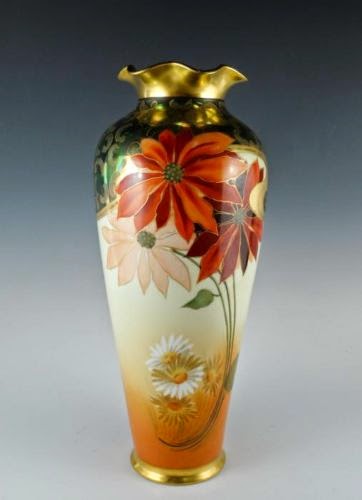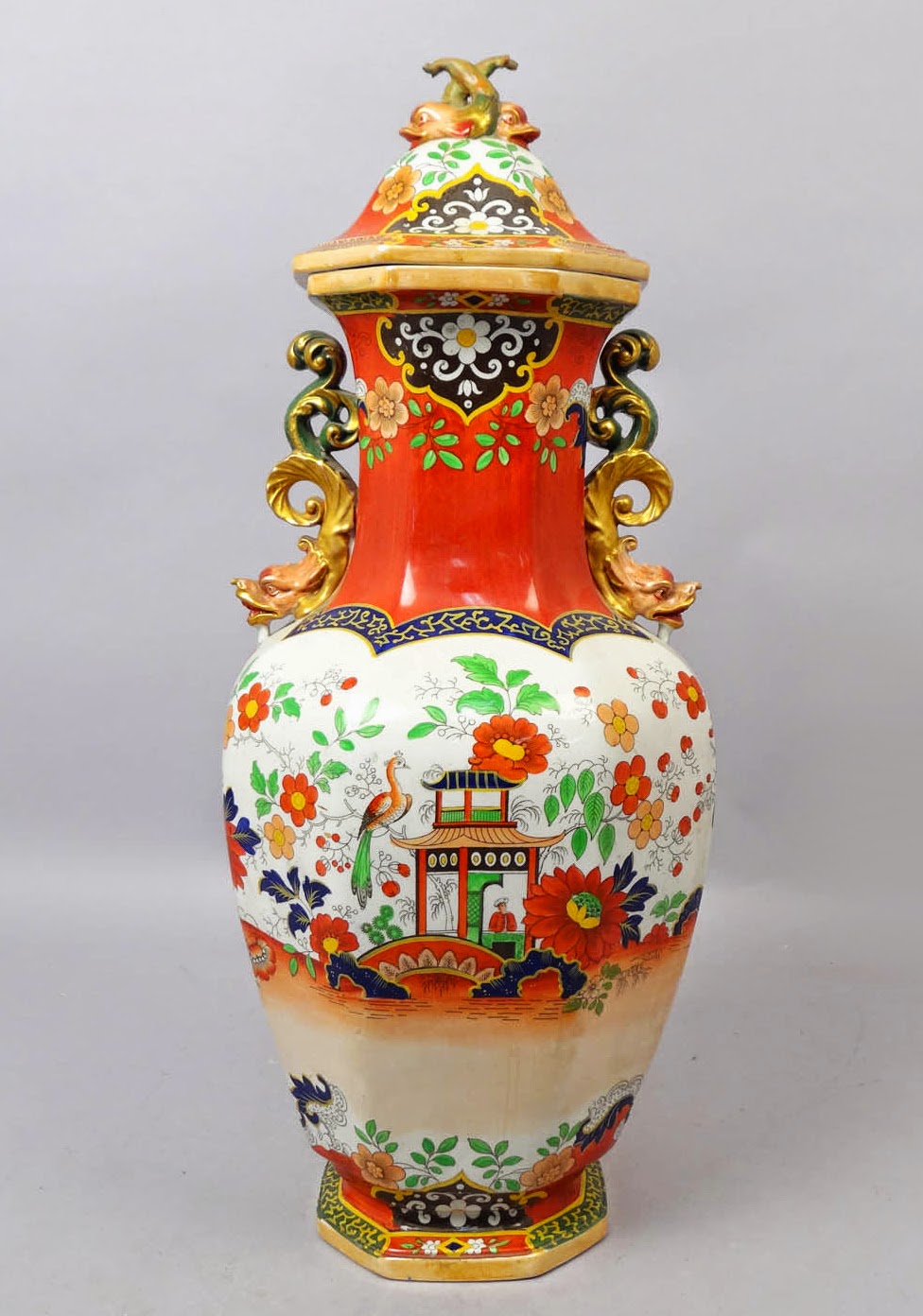The blog has moved!
Visit us at www.ninecarolineantiques.com for updated blog content
View this blog entry on the updated Nine Caroline Antiques website
Visit us at www.ninecarolineantiques.com for updated blog content
View this blog entry on the updated Nine Caroline Antiques website
The Reinhold Schlegelmilch Porcelain Factory was founded in the province of Thuringia, Germany in the 1890s. The porcelain from the factory was thin, lightweight, and translucent (all markers of fine quality porcelain). Pieces were hallmarked with a distinct green wreath and "R.S.Prussia" in red lettering. This is the factory's most recognizable mark although several others were used throughout the years. This early hallmark conferred the name of RS Prussia to pieces from the Reinhold Schlegelmilch Porcelain Factory. RS Prussia quickly gained in popularity, and the designs created during the factory's heyday were very ornate, often showing a distinct Art Nouveau influence. Collectors consider the pieces made by RS Prussia between 1900-1905 to be among the best porcelain made in Europe.
This beautiful creamer and sugar set dates to circa 1900. The pieces have elegantly ornate forms in the Art Nouveau style, with curvilinear surfaces that gracefully curve in and out. The forms have a subtly naturalistic shape that echoes the organic patterns of leaves, flowers, and vines. Each piece is decorated with a vibrantly hued transfer print of two tigers in a lush, verdant setting. The pieces are accented with gilded details. Each piece is hallmarked with the distinctive red and green RS Prussia mark.
Additional images and further information can be found here.






